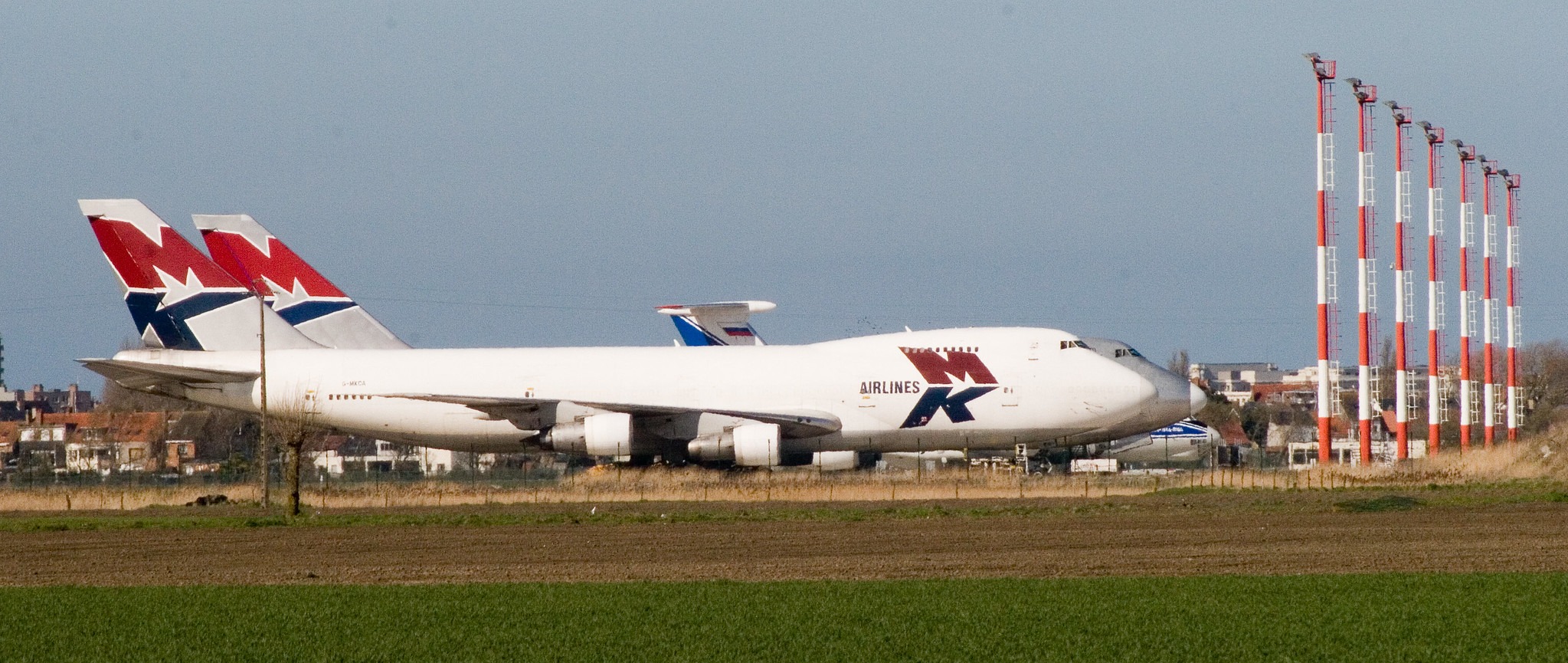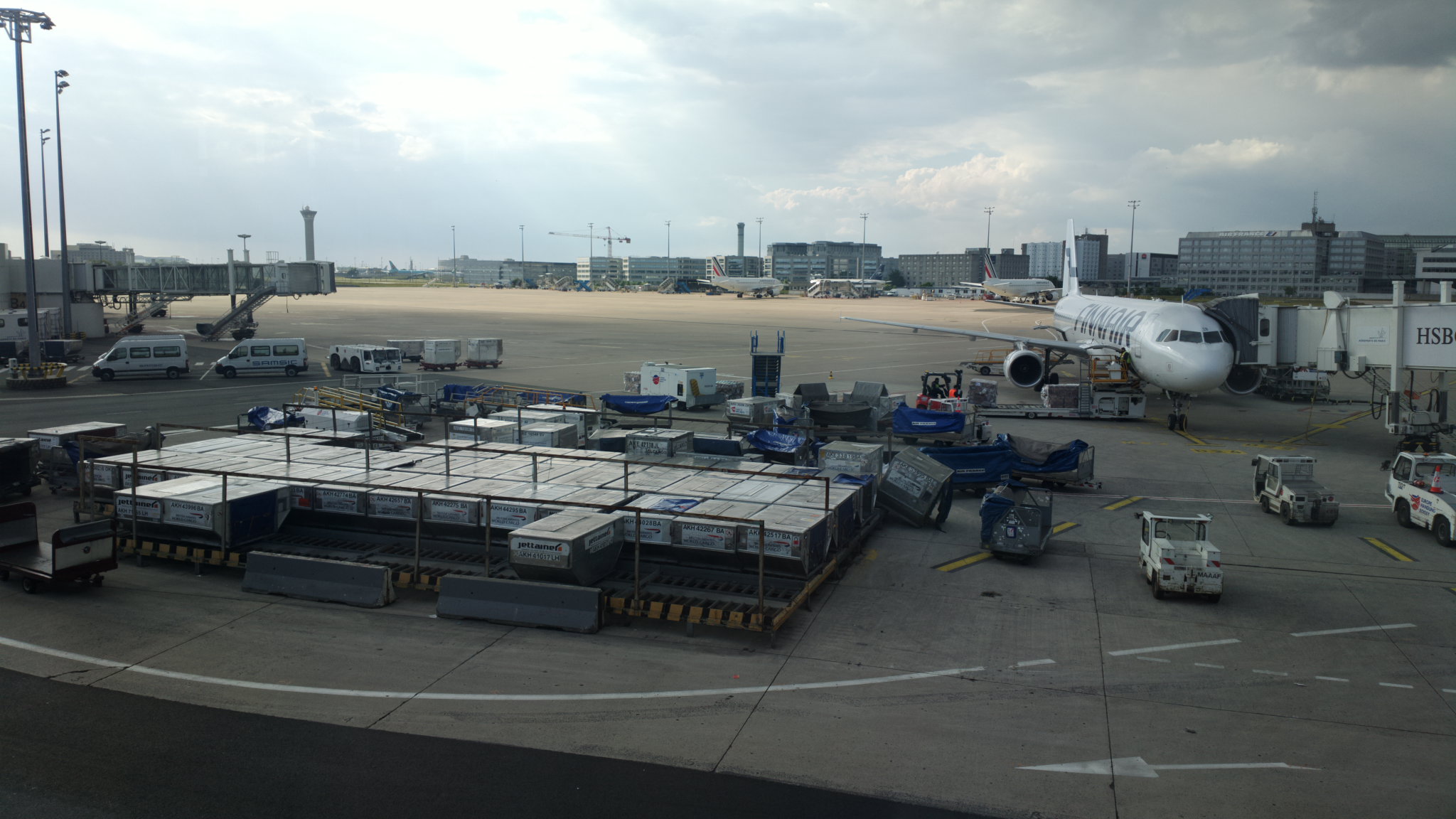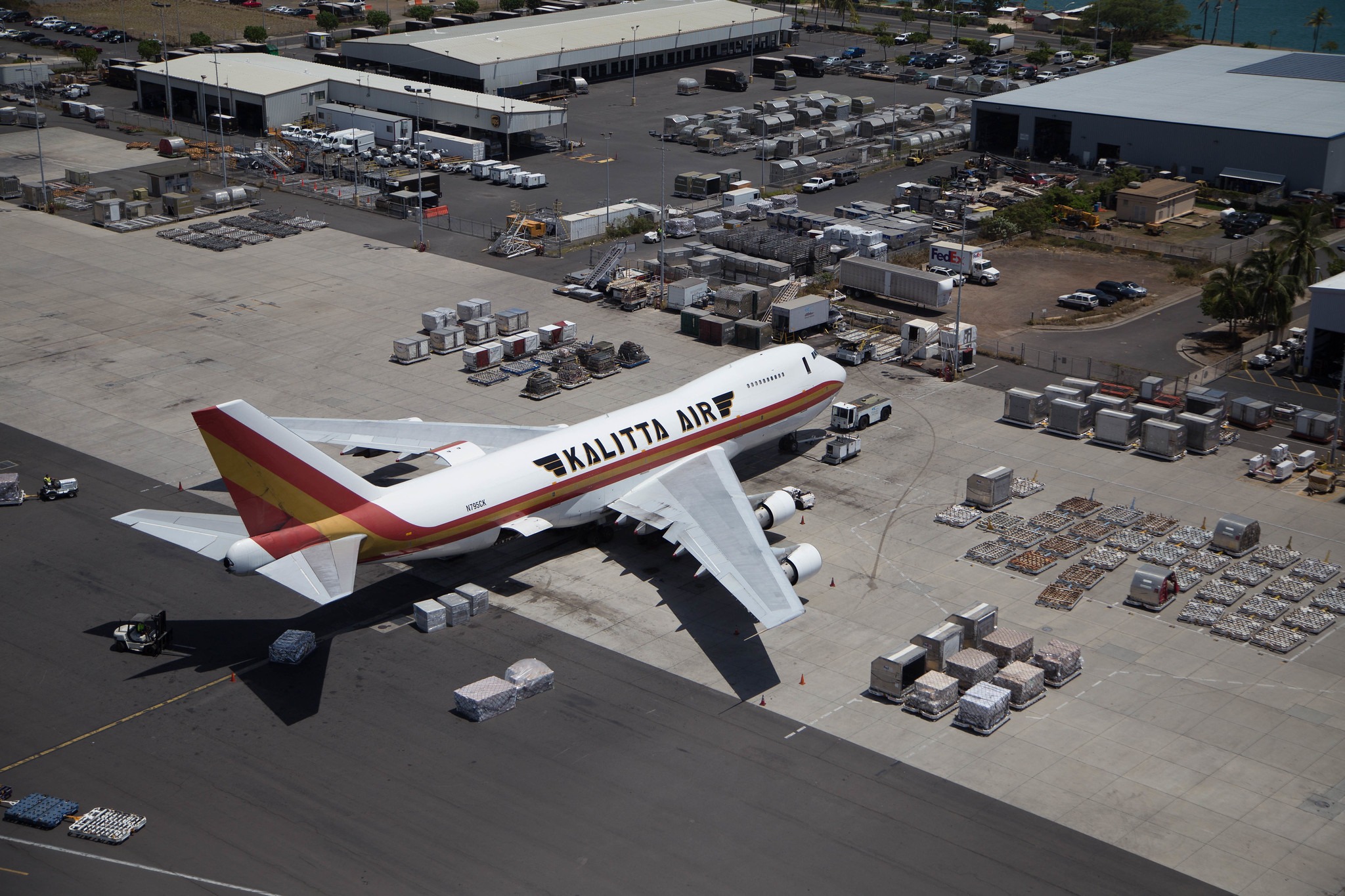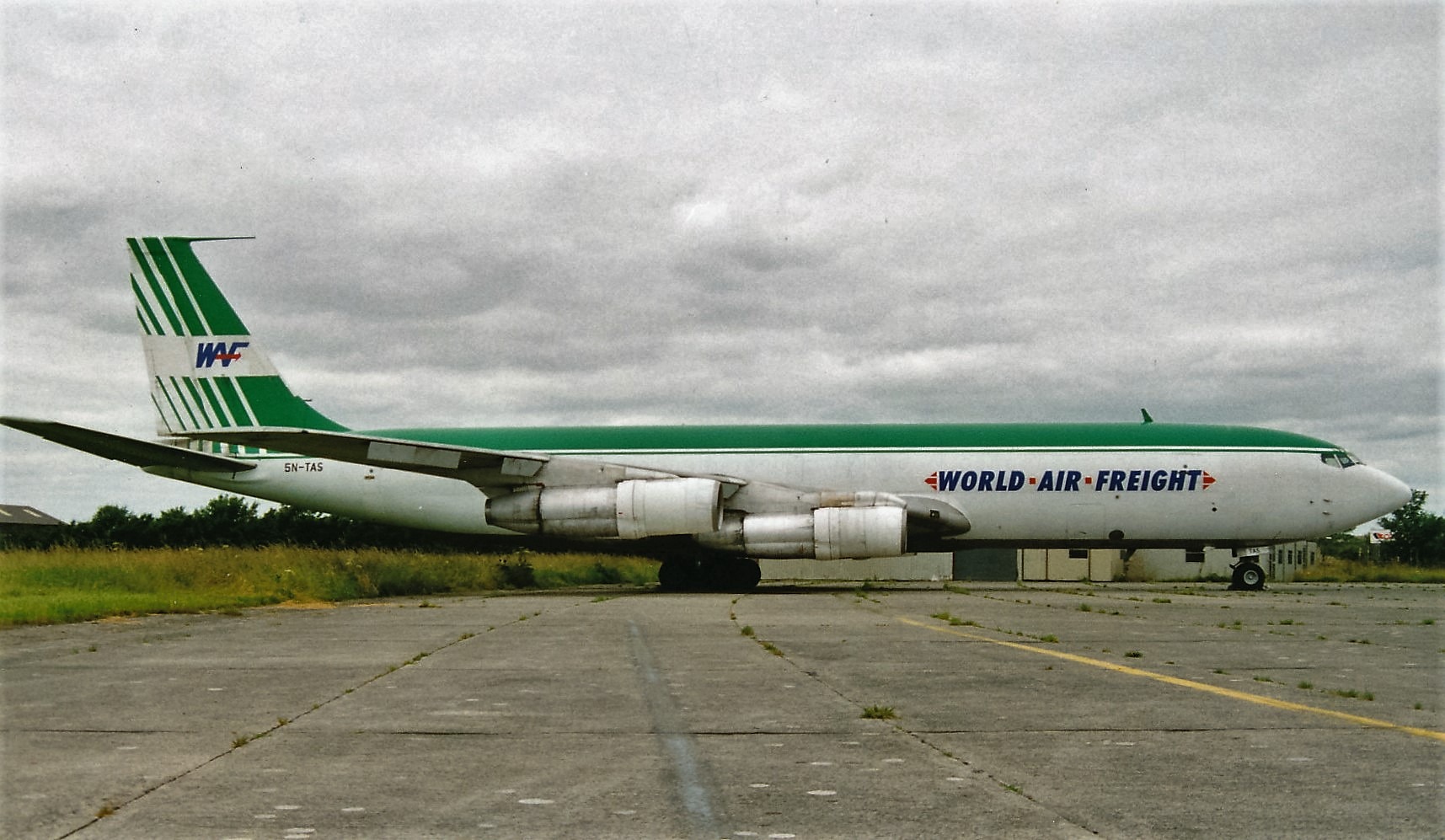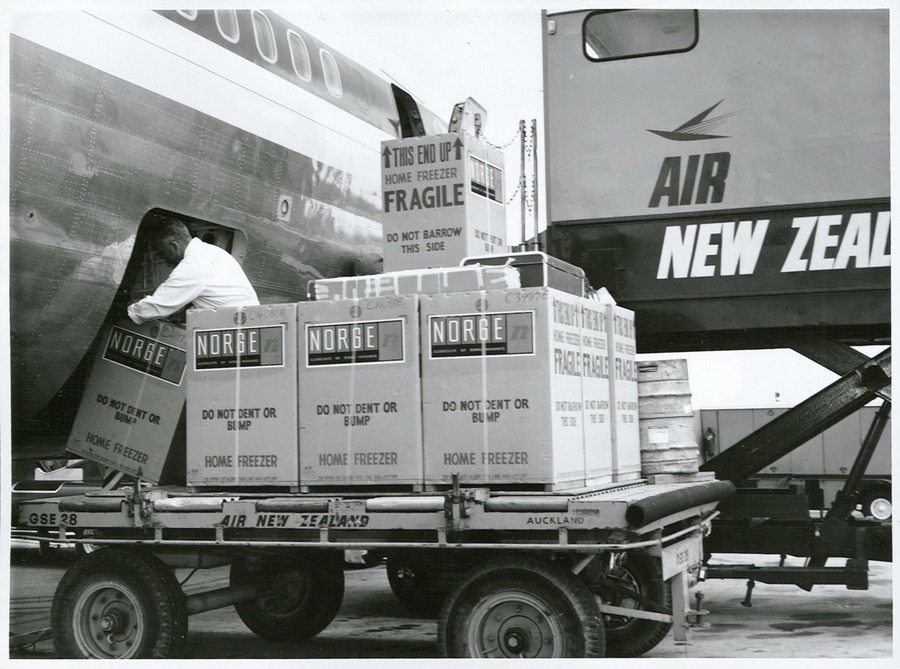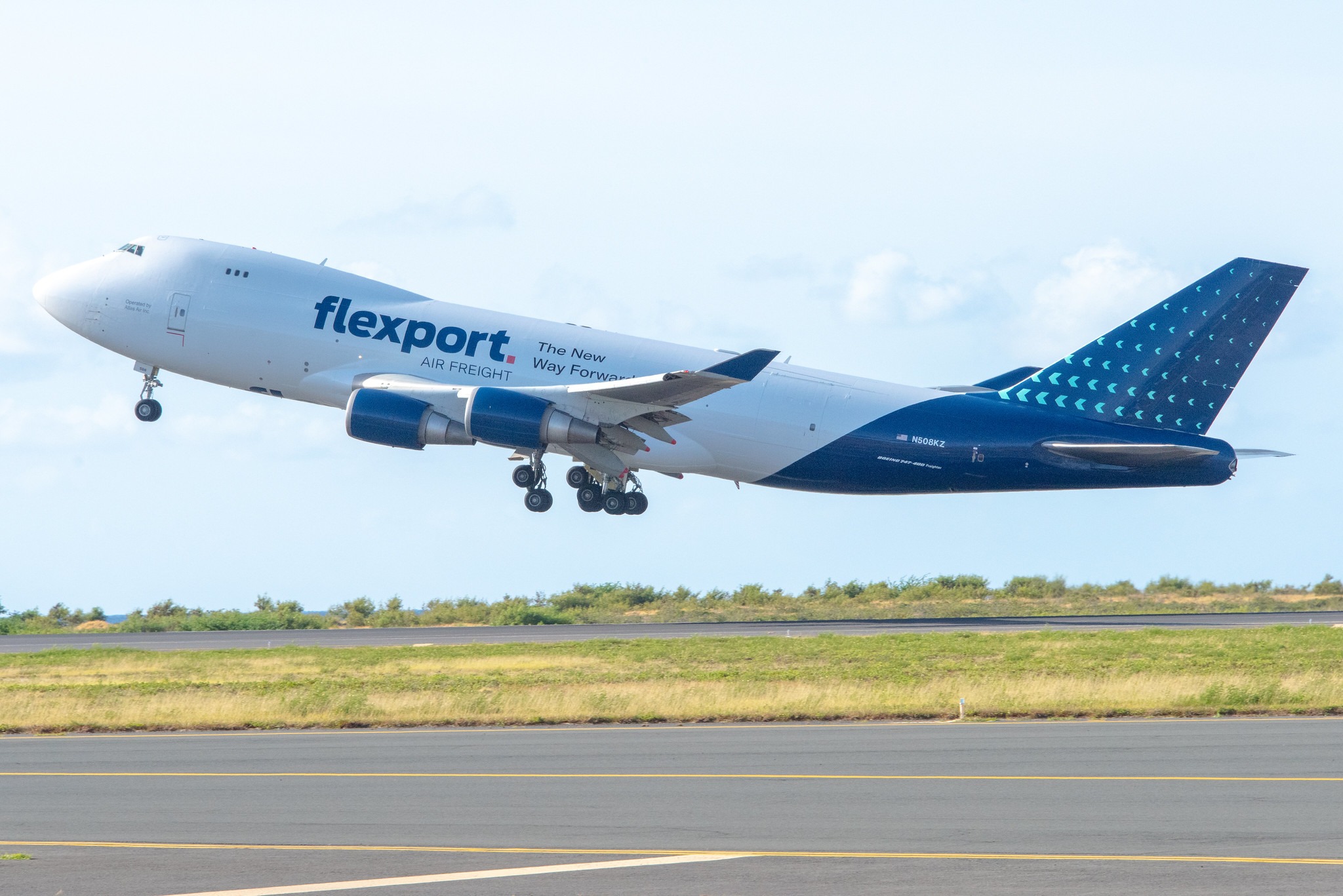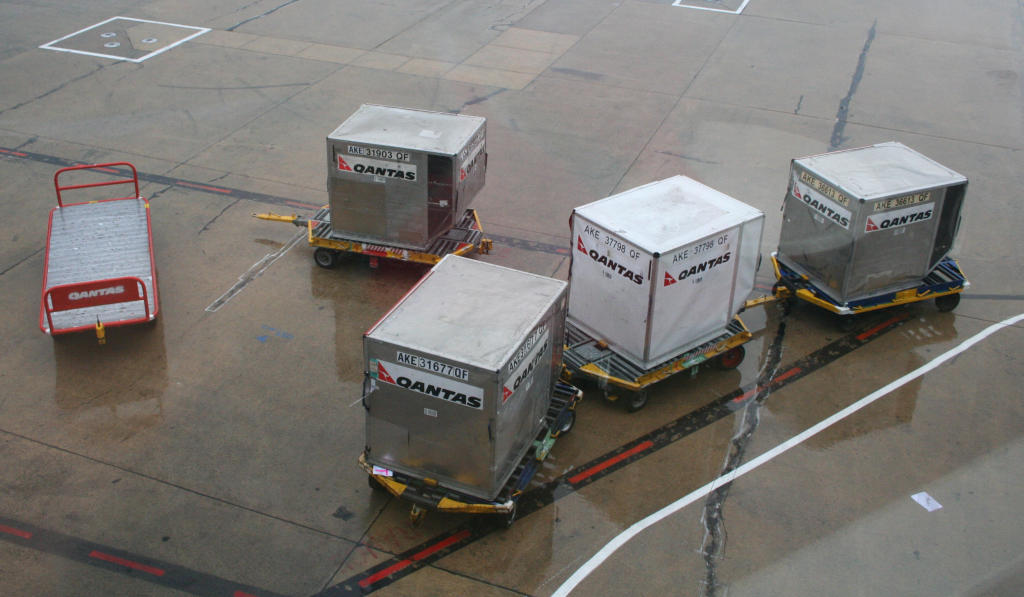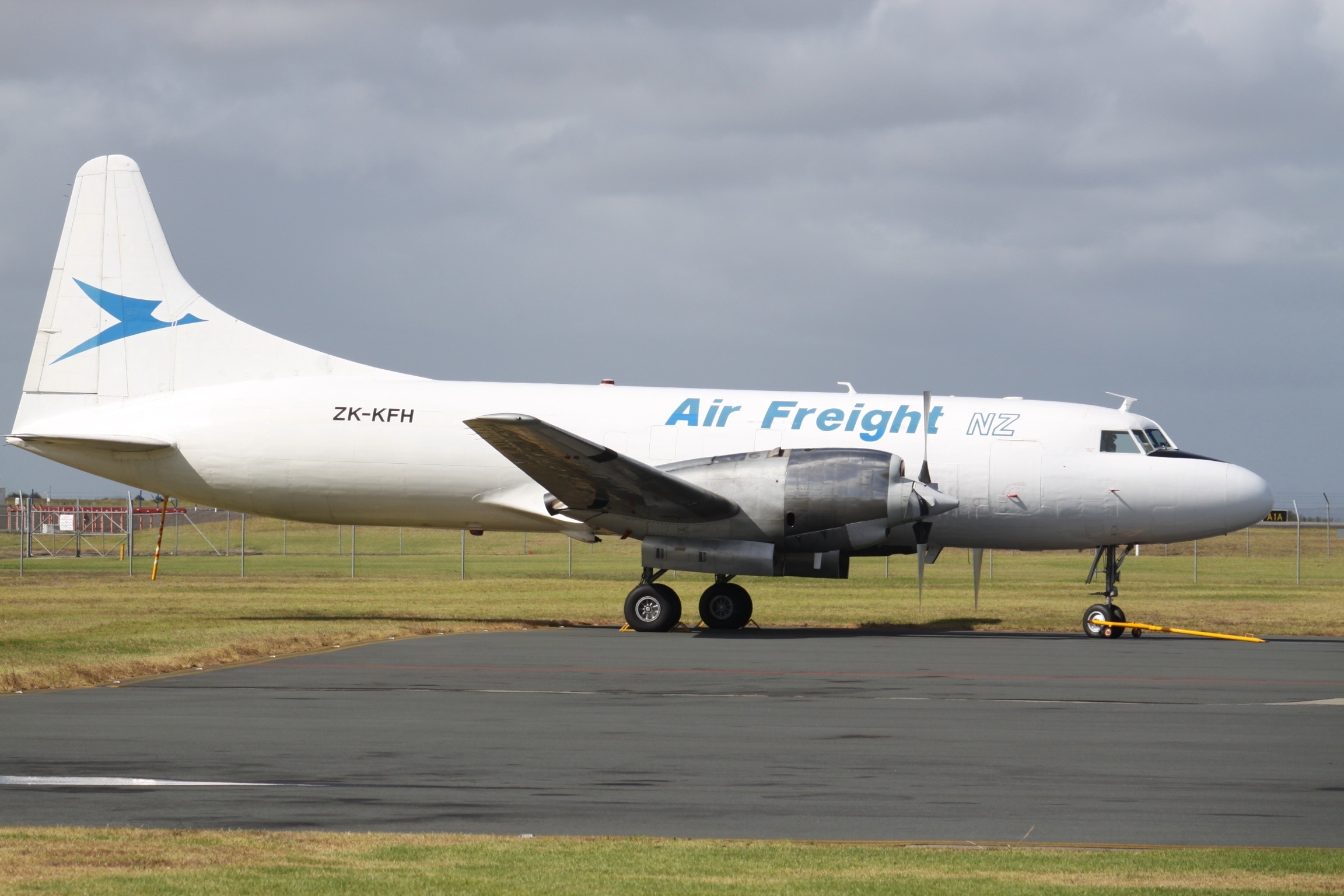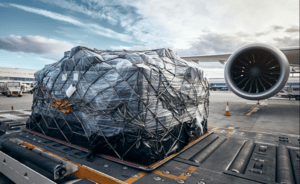Air Freight Companies | CargoMaster®
Reach New Heights with Air Freight Companies

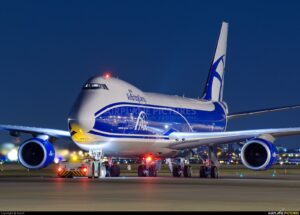 CargoMaster an Air Freight Company
CargoMaster an Air Freight Company
CargoMaster is your top choice for air freight services in Australia and worldwide, serving all major capital cities including Sydney, Melbourne, Perth, Adelaide, Darwin, and Hobart. With over 35 years of experience, CargoMaster offers comprehensive solutions tailored to meet your air freight needs. Whether you’re importing or exporting, our global network ensures efficient and reliable transportation to over 750 international centers. From urgent same-day deliveries to handling oversized and heavy freight, CargoMaster is committed to providing exceptional service and cost-effective solutions for your air freight requirements. Experience the difference with CargoMaster and streamline your air freight logistics today.
Air Freight Companies
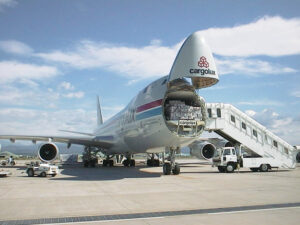 CargoMaster is one of Australia’s most trusted Australian Air Freight Companies. Domestic air freight for all types of air cargo including large domestic air cargo projects. CargoMaster offers over 35 years experience organising the urgent uplift of time sensitive air freight and is an Australian based International and Domestic Air Freight Company. CargoMaster services include air freight for big, bulky and heavy air freight. If you need to move air freight Australia wide.
CargoMaster is one of Australia’s most trusted Australian Air Freight Companies. Domestic air freight for all types of air cargo including large domestic air cargo projects. CargoMaster offers over 35 years experience organising the urgent uplift of time sensitive air freight and is an Australian based International and Domestic Air Freight Company. CargoMaster services include air freight for big, bulky and heavy air freight. If you need to move air freight Australia wide.
Dedicated Links
Sydney; Melbourne; Brisbane; Perth; Adelaide; Tasmania; Gold Coast
CargoMaster’s Air Freight Experience
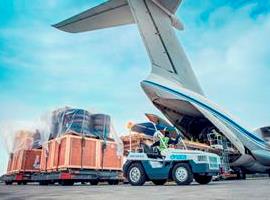 With over 35 years of expertise in air freight services, CargoMaster stands as a trusted leader in both domestic and international logistics, ensuring fast, secure, and efficient transportation around the world. Whether it’s moving cargo within Australia’s major cities or reaching destinations across the globe, CargoMaster’s seasoned experience guarantees reliable delivery while saving you valuable time and money. Trust CargoMaster for your air freight needs and experience unparalleled efficiency and cost-effectiveness in logistics solutions.
With over 35 years of expertise in air freight services, CargoMaster stands as a trusted leader in both domestic and international logistics, ensuring fast, secure, and efficient transportation around the world. Whether it’s moving cargo within Australia’s major cities or reaching destinations across the globe, CargoMaster’s seasoned experience guarantees reliable delivery while saving you valuable time and money. Trust CargoMaster for your air freight needs and experience unparalleled efficiency and cost-effectiveness in logistics solutions.
 Domestic Air Freight Australia
Domestic Air Freight Australia
CargoMaster provides expedited and secure domestic air freight services across Australia, catering to all major capital cities including Sydney, Melbourne, Perth, Adelaide, Darwin, and Hobart. Offering express, same-day, and overnight delivery options, CargoMaster ensures timely transportation of goods, no matter the size or weight. With a focus on efficiency and reliability, CargoMaster’s services guarantee fast and secure delivery while saving both time and money for its customers. Trust CargoMaster for all your domestic air freight needs and experience seamless logistics solutions.
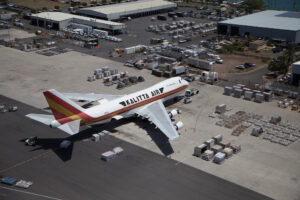
International Air Freight Worldwide
CargoMaster offers comprehensive international air freight services connecting major global hubs like New York, Paris, London, and Wellington. With options for express, same-day, and overnight delivery, CargoMaster ensures timely transportation of oversized and heavy freight, prioritizing speed and security. Our fast and secure solutions not only save valuable time but also optimize cost-effectiveness, making CargoMaster the preferred choice for businesses seeking efficient logistics solutions on a global scale. Trust CargoMaster to deliver your cargo swiftly and reliably while saving you both time and money.
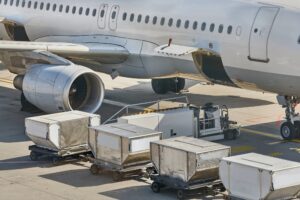 The Economics Behind Air Freight
The Economics Behind Air Freight
Analysing the Influence of Volumetric Weight on Air Cargo Costs. In the domain of air cargo, charges are determined by the greater value between the actual weight and volumetric weight of the items. This principle underscores the distinct feature that, while a ton of feathers and a ton of bricks weigh the same, feathers occupy much more space in the cargo hold. As a result, the transportation cost for feathers is calculated based on their volumetric weight. Assessing the volumetric weight of your shipment is a simple process.
Volumetric Weight Calculation – Length x Width x Height x 200
By utilising the formula length x width x height x 200, you can ascertain the volumetric weight of your cargo. The relevant charges will be computed based on whichever weight is greater—whether it’s the volumetric weight or the actual weight of the goods.
Ensuring a Smooth and Secure Air Freight Journey
Careful preparation of your air freight before shipping is essential for a smooth and secure journey with CargoMaster. To ensure efficient handling and protect your cargo from damage, it’s crucial to fully understand the nature of the products you’re shipping. Consider the following guidelines to maximize efficiency and maintain the integrity of your air cargo.
Navigating Risks in Air Freight
Steer clear of subpar packaging that risks shifting and puncturing. Inadequate packaging exposes your cargo to potential damage, 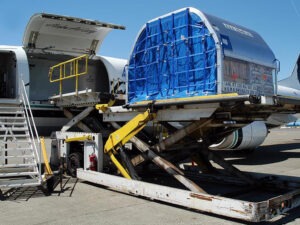 including punctures. Shield your contents from compression forces during stacking, shocks, vibrations, or tie-downs. Opt for robust packaging capable of withstanding drops and impacts during handling.
including punctures. Shield your contents from compression forces during stacking, shocks, vibrations, or tie-downs. Opt for robust packaging capable of withstanding drops and impacts during handling.
Enhanced Materials for Air Freight Packaging
Choose robust corrugated fiberboard boxes to resist edge compression. Be mindful of potential strength reduction over time, especially in humid conditions. While single-use packages may suffice, they may lack the durability needed for multiple trips.
Improving Wooden Packaging for Air Freight
Boost durability with interlocking corners and diagonal braces. Avoid fastening into the end 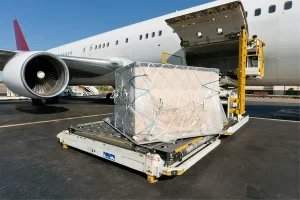 grain of wood to preserve strength. Limit knots to 30% of the surface area and avoid placing fasteners within them.
grain of wood to preserve strength. Limit knots to 30% of the surface area and avoid placing fasteners within them.
Air Freight Pallets
Choose pallets that match shipment dimensions without overhang. Avoid damaged or pallets with protruding fasteners. Verify pallets have adequate floor-bearing load capacity.
By adhering to these guidelines and implementing suitable cushioning techniques, you can ensure the safety and security of your international shipments when leveraging CargoMaster’s air freight services.
CargoMaster’s Trusted Partners
Qantas Freight, Air New Zealand Cargo, CargoMaster, Toll Priority, DHL, FedEx, Team Global Express
Common Questions About Air Freight
Who is the largest air freight company in the world?
The largest air freight company can be measured in different ways. In terms of revenue, United Parcel Service (UPS) is the largest, with a turnover exceeding US$85 billion in 2020. If you consider the largest in terms of aircraft, FedEx (Federal Express) has the largest operational fleet, with approximately 650 aircraft. FedEx is also the company that moves the most freight.
Is sea freight cheaper than air freight?
Generally, yes, sea freight is cheaper than air freight. While there may be specific instances where sea freight is more expensive, in most cases, sea freight is the more economical option.
Which companies move the most freight?
The world’s two largest air freight companies, UPS and FedEx, move the most freight. Both companies also handle road freight.
What is the difference between air cargo and air freight?
There is no difference between air cargo and air freight. The terms are used interchangeably, with “air cargo” more common in the USA and “air freight” more common in Australia.
What are Air Freight Services?
Air Freight Services encompass a wide range of transportation services by air. CargoMaster offers services such as Same Day Air Freight, Overnight Air Freight, Heavy Air Freight, Air Freight Charter, International Air Freight, and Heavy Lift Air Freight Services.
How much does air freight cost?
The cost of air freight depends on the weight, dimensions, origin, and destination of the goods. For an accurate air freight quote, contact CargoMaster.
How is air freight cost calculated?
Air freight cost is calculated based on the weight, dimensions, and pickup and delivery locations of the goods. Contact CargoMaster for detailed air freight rates.
How much more expensive is air freight?
Air freight is significantly more expensive than sea freight. However, air freight is the preferred method for transporting valuable and fragile goods due to its speed.
Which companies handle air freight?
CargoMaster, with over 35 years of experience, handles air freight domestically within Australia and to destinations worldwide. CargoMaster provides both domestic and international air freight services.
 Worlds Largest Air Freight Companies
Worlds Largest Air Freight Companies
Federal Express (FEDEX): FedEx, (as they are more commonly known) is a USA based (Memphis, Tennessee) Air Freight Company (classified as a Cargo Airline). Federal Express was founded on 18 June 1971 by Fred Smith (with an inheritance of 4 million dollars). Fred Smith is now a USA based Billionaire, with a reported wealth in excess of 6 billion US$. The company employs over 250,000 people worldwide and first began operations by offering overnight freight services to 25 USA cities. The air freight carried consisted mostly of parcels and documentation. Fedex has an awesome network throughout the world and is known as a dynamic and progressive air freight and courier company.
For the financial year ended 2020 Fedex reported a turnover in excess of US$60 Billion, a huge company that has consistently shown healthy revenue growth year over year for the past 10 years. The company has a fleet of over 650 air craft (mostly based in the USA).
United Parcel Service (UPS): United Parcel Service, or UPS as that are known today started way back in 1907 by James Casey, back then the company was called American Messenger Company. In those days US POST was the company’s biggest customer and deliveries were done on foot or with a bicycle. In the early days freight consisted mostly or parcels and documentation.
In 1919 the company was renamed UNITED PARCEL SERVICE. Air freight services with UPS were first performed in 1929. In 1953 UPS blue label air was introduced offering a two-day freight service to major centres along the east and west coasts of the USA.
The company enjoyed growth for many years and in 1975 expanded into international operations with the establishment of an office/facility in Canada. In 1998 UPS airlines was launched and became the fastest growing airline in history.
For the year ending 2020 UPS turned over approx. 80 billion US$ (and reported a 7.8 billion profit) and employed over 400,000 people world-wide, A TRANSPORTATION GIANT by anyone’s standards! UPS operates a fleet of over 300 air-craft and an on-ground fleet of over 100,000 vehicles. PS offerings one of the worlds most sophisticated logistics networks, although based in the USA, over 40% of the company’s revenue is generated in Europe.
The current CEO of UPS is Carole Tome, who was appointed in March 2020. The company’s largest customer as at 2020 would be Amazon, they spent a whooping 13 billion dollars with UPS, Alibaba represents over 13% of UPS revenue. In terms of turnover UPS is larger than Fedex however, FEDEX operate more aircraft than UPS.
DHL: DHL is one of the world’s leading air freight companies, the company handles over 160 million shipments per year. DHL was founded in California in 1969 by Adrian Dalsey, Larry Hillblom and Robert Lynn. The Company’s name is made up of the first letter of the 3 founder’s surnames.
DHL delivers to over 220 countries and employs over 350,000 people worldwide. As at 2021 DHL is wholly owned by Deutsche Post who purchased a controlling interest in the company in 2002. DHL turned over EUR 19 BILLION IN THE 2020 FINANCIAL YEAR BY FAR Deutsche Posts most profitable business unit. The DHL fleet consists of over 250 aircraft worldwide. These days the majority of DHL revenue is generated in Europe. DHL is considered the world’s third largest international air courier after UPS and FEDEX. For many years DHL was the only international courier allowed to deliver into some middle eastern countries. DHL has an awesome global network and offer advanced logistics technology. As at 2021 DHL CEO is Frank Appel (Chief Executive DP DHL Group)
XPO Logistics: XPO LOGISTICS was established in September 2011 by Brad Jacobs (a USA based Billionaire). Mr Jacobs purchased what was then called Express-1 and then changed the trading name to XPO Logistics. XPO (as they are known on the NYSE) CORPORATE HEAD OFFICE IS LOCATED IN Greenwich, Connecticut. The Company has acquired several large logistics and transportation companies since its inception. For the year ended 2020 XPO turnover exceeded USD 15 billion, with net income in excess of 450 million, a huge increase in turnover compared with only USD 5 BILLION in 2012!. For the financial year 2020 XPO reported net assets of USD 14 Billion. Flowers for Mum, gadgets for Dad. Toys at Christmas, no one is sad. If it were not for air cargo, we would not have Strawberries at Wimbledon, the latest i-fad Stylish new shoes, wow they are rad! If it were not for air cargo, we would not have the hottest jewelry, the freshest of meat. Even the leather that covers your seat! If it were not for air cargo, we would not have TVs, radios, music that booms. If it were not for air cargo, we would not have Salmon from Norway, lamb from the South Tasty chocolates, delicious in the mouth. If it were not for air cargo, we would not have Sports cars, racehorses, helicopters too Yes, on an airplane that will surprise you. If it were not for air cargo, we would not have Circuit boards, scanners, crayons and plates Even the rollers that affix to your skates If it were not for air cargo, we would not have Wines, clothes and diamond rings If it were not for air cargo, we would not have Thousands of jobs and millions of lives impacted positively as the economy thrives, make it here, sell it there. Air cargo people, they really care! So as you sit comfortably in your aircraft seat, Think of the cargo beneath your feet! Sydney Airport – IATA Code – SYD Melbourne Airport – IATA Code – MEL Brisbane Airport – IATA Code – BNE Perth Airport – IATA Code – PER Adelaide Airport – IATA Code – ADL Gold Coast Airport – IATA Code – OOL Cairns Airport – IATA Code – CNS Canberra Airport – IATA Code – CBR Hobart Airport – IATA Code – HBA Darwin Airport – IATA Code – DRW Townsville Airport – IATA Code – TSW Newcastle Airport – IATA Code – NTL Sunshine Coast Airport – IATA Code – MCY Mackay Airport – IATA Code – MKY Avalon Airport – IATA Code – AVV Alice Springs Airport – IATA Code – ASP Rockhampton Airport – IATA Code – ROK Ballina Airport – IATA Code – BNK Ayers Rock Airport – IATA Code – AYQ Karratha Airport – IATA Code – KTA Hamilton Island Airport – IATA Code – HTI Proserpine Airport – IATA Code – PPP Broome Airport – IATA Code – BME Coffs Harbour Airport – IATA Code – CFS Port Hedland Airport – IATA Code – PHE Newman Airport – IATA Code – ZNE Kalgoorlie-Boulder Airport – IATA Code – KGI Albury Airport – IATA Code – ABX Gladstone Airport – IATA Code – GLT Mildura Airport – IATA Code – MQL Port Macquarie Airport – IATA Code – PQQ Mount Isa Airport – IATA Code – ISA Dubbo Airport – IATA Code – DBO Please Note: The below list does not describe all types of hazardous air cargo (it is not exhaustive and all encompassing). General items listed below may be found in baggage and possibly have hazards that are not immediately apparent. There are strict laws in relation to lodging of hazardous air cargo and compliance with hazardous air cargo regulations. Typical examples of hazardous air cargo The international community has established a classification system for easy identification of dangerous goods. These goods fall into nine primary classes, and some classes are further divided to address specific risks. Each class/division has a corresponding label that accurately represents the nature of the hazard. These labels must be attached to the package during transport and remain intact throughout the journey. Take a look at the illustrated examples below to understand how these labels effectively communicate the potential dangers. Under regulations, labels must be clearly visible on the outside of the package and must stay on the package while in transit. You can often find labels printed on most inner packages such as: Below are the 9 hazard labels for the 9 classes of dangerous goods. This includes items such as: These can be transported as: This includes aerosols. Class 2 has 3 divisions: This includes liquids with a boiling point of 35⁰ C or less, or a flash point of 60⁰ C or less such as: These are substances that can spontaneously combust and substances, that when they come into contact with water or emit flammable gases. Class 4 has 3 divisions: These substances are not necessarily combustible on their own but can react dangerously with other substances. Class 5 has 2 divisions: These substances can cause sickness, injury or death if consumed. Class 6 has 2 divisions: These are substances that emit invisible ionising radiation that can be harmful to humans and animals. It can cause objects such as aircraft and equipment to become contaminated if not packaged and handled correctly, such as: These substances can cause irreversible damage if they come into contact with skin and could destroy other freight, or materially damage containers or aircraft. This includes: These are substances and articles which, during air transport, present a danger not covered by other classes. There are 2 types of handling labels – 1 for lithium battery shipments, and another for all other miscellaneous dangerous goods. This class includes: In addition to hazard labels, trained staff must attach handling labels where needed. Staff must use these 4 handling labels with the appropriate hazard labels: This label is used to show that the load cannot be carried on a passenger aircraft. This label is used on liquefied gases, such as the ones in Class 2. This label ensures a load is placed the correct way up and can be used for non-dangerous goods. This label ensures that the load is kept away from the aircraft compass detector unit while being loaded and unloaded. ULDs are considered an aircraft part and are the only aircraft parts that can be removed from the aircraft and be returned after being handled by unregulated operators, ULD’s are considered to directly contribute to flight safety. Types Of Unit Load Devices Used In Australia AKE Container Type: AKE CONTAINERATA Code: LD3 Type: AAU CONTAINER Type: ALF CONTAINER Type: AMA CONTAINER Type: AMF CONTAINER P1P_PAG Pallet Type: PLA PALLET Type: PEB CONTAINER Type: PLA PALLET Type: PMC, PQP, P6P PALLET Type: RKN CONTAINER Size: Fitted on PGA 20 ft. Pallet IAG CARGO A wide variety of aircraft available for international air cargo. AIRBUS A330-200 AIRBUS A330-300 AIRBUS A320 AIRBUS A321 AIRBUS A330-800 BAE 146-300 FREIGHTER (Quiet trader) Boeing B737-300 Freighter Boeing B737-800 Boeing B767-300 Freighter Boeing B787-9 INCOTERMS are standard trade terms most commonly used in international freight contracts for sale of goods. It is essential that you are aware of your terms of trade prior to shipment. EXW – EX WORKS (… named place of delivery) FCA – FREE CARRIER (… named place of delivery) CPT – CARRIAGE PAID TO (… named place of destination) CIP– CARRIAGE AND INSURANCE PAID TO (… named place of destination) DAT – DELIVERED AT TERMINAL (… named terminal at port or place of destination) DAP – DELIVERED AT PLACE (… named place of destination) DDP – DELIVERED DUTY PAID (… named place) MARITIME TERMS FAS – FREE ALONGSIDE SHIP (… named port of shipment) FOB– FREE ON BOARD (… named port of shipment) CFR– COST AND FREIGHT (… named port of destination) CIF – COST INSURANCE AND FREIGHT (… named port of destination) SIGNIFICANT CHANGES AND AMENDMENTS TO THE 59TH EDITION (2018) 9—Handling 9.3.2—Table 9.3.A and the provisions of 9.3.2 have been revised to introduce segregation requirements for lithium batteries (UN 3480 and UN 3090 only) and dangerous goods classified in Class 1 other than Division 1.4S, Division 2.1, Class 3, Division 4.1 or Division 5.1. This aligns to the changes in 5.0.1.5, 5.0.2.11, PI 965 and PI 968. A note has been added to identify that the segregation of packages and overpacks loaded into ULD and aircraft cargo compartments, while recommended as of 1 January 2018, will not become mandatory until 1 January 2019. Appendix B—In Appendix B.2.2.4 new Cargo IMP codes have been added for UN 3090, Section IA and IB of PI 968—RBM and UN 3480, Section IA and IB of PI 965—RBI. These two new IMP codes facilitate the differentiation of fully regulated lithium batteries (UN 3090 and UN 3480) from those packed with equipment or contained in equipment (UN 3091 and UN 3481), which are currently assigned to RLM and RLI respectively. Appendix D—contact details for competent authorities have been updated. Appendix E—changes have been made to the list of UN Specification Packaging Suppliers (E.1) and the Package Testing Facilities (E.2). Appendix F—the list of Sales Agents (F.2), IATA Accredited Training Schools (F.3—F.5) and IATA Authorised Training Centres (F.6) have been revised. Appendix I—A new appendix has been added to this edition of the DGR to provide the detail of the changes that will come into effect as of 1 January 2019 based on the adoption of the changes arising from the 20th revised edition of the UN Model Regulations as well as the changes that have been agreed to date by the ICAO Dangerous Goods Panel for inclusion into the 2019–2020 edition of the Technical Instructions. These changes include: ● replacement of most instances of the word “risk” by the word “hazard”. The changes reflects the increasing use of safety management systems where “risk” is the likelihood of an event combined with the severity of the outcome, whereas hazard is used to identify the inherent properties. So, for example a substance may have a “subsidiary hazard”, not a “subsidiary risk”. ● significant changes to the provisions for the classification of corrosive substances. These changes reflect the work of the UN Subcommittee with the GHS Subcommittee to better align the classification provisions for transport for Class 8 substances with those for supply and use. ● a new requirement for manufacturers and subsequent distributors of lithium cells or batteries to make available a summary of the UN 38.3 tests. ● new provisions for the classification of articles containing dangerous goods, n.o.s.. This includes twelve new UN numbers, UN 3537 to UN 3548, that have been assigned to articles containing dangerous goods in Classes 2, 3, 4, 5, 8 and 9 and Division 6.1. The details of the provisions that will come into effect in 2019 for air transport have still to be finalised by the ICAO dangerous Goods Panel. ● a number of new and modified special provisions. ● removal of the lithium battery handling label (7.2.4.7). As of 1 January 2019 only the lithium battery mark (7.1.5.5) will be permitted on packages of lithium batteries prepared in accordance with Section IB of PI 965 or PI 968, or Section II of PI 965 to PI 970. REFERENCE MARKS The following symbols placed against an item indicate changes from the previous edition: Symbol—Meaning —Addition of a new item. —Change to an item. —Cancellation of an item. —Additional IATA requirements. —Indicates that the item relates entirely to Radioactive shipments Addition Information (Click the +/- plus/minus symbols to expand/collapse)
Addition Information (Click the +/- plus/minus symbols to expand/collapse)
Even the speakers that fill our rooms.
Cheeses, books in fact most things
Engines (contain fuel and that are not cleaned, purged and sealed)
Mining equipment
Magnets
Pressurised containers
Passenger baggage (containing flammable gas or liquid lighter refuel. camping stove cylinders
Photographic Supplies
Expeditionary equipment
Vaccines
Solvents, adhesives
Pesticides
Dental apparatus
Machinery parts
Frozen foods (packed in solid dry ice)
Class 1 Explosives

Class 2 Gases

Class 3 Flammable liquids

Class 4 Flammable solids

Class 5 Oxidising substances and organic peroxides

Class 6 Toxic and infectious substances

Class 7 Radioactive materials

Class 8 Corrosives

Class 9 Miscellaneous
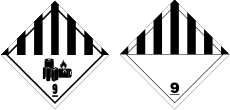
Handling labels
Cargo aircraft only

Cyrogenics

This way up

Magnetised material

Internal Volume: 152 cu. ft. 4.3 mc
Weight Limit: 1,588 kg
Loadable Aircraft Type: 747, 747F, 777, Airbus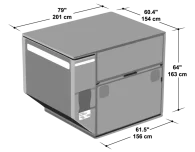 AAU Container
AAU Container
ATA Code: LD29
Internal Volume: 505 cu. ft. 14.3 mc
Weight Limit: 4,626 kg
Loadable Aircraft Type: 747, 747F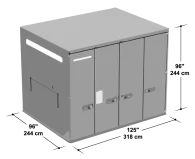 ALF Container
ALF Container
ATA Code: LD6
Internal Volume: 310 cu. ft. 8.78 mc
Weight Limit: 3,175 kg
Loadable Aircraft Type: 747, 747F,777, Airbus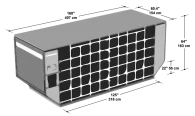 AMA Container
AMA Container
ATA Code: M1
Internal Volume: 621 cu. ft. 17.58 mc
Weight Limit: 6,804 kg
Loadable Aircraft Type: 747F AMF Container
AMF Container
Internal Volume: 516 cu. ft. 14.6 mc
Weight Limit: 5,035 kg
Loadable Aircraft Type: 747,747F, 777, Airbus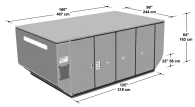
Size: Base: 60.4″x 125″, Height: 64″
Weight Limit: 3,175kg
Loadable Aircraft Type: 747, 747F, 777, Airbus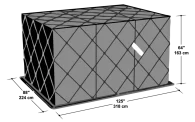 PEB Container
PEB Container
Size: Base: 53″ x 88″, Height: 84″
Weight Limit: 1,800kg
(B-HIH -1,300 KG)
Loadable Aircraft Type: 747F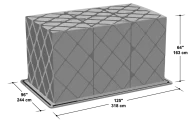 PLA Pallet
PLA Pallet
Size:
Base: 60.4″x 125″
Height: 64″
Weight Limit: 3,175kg
Loadable Aircraft Type: 747, 747F, 777, Airbus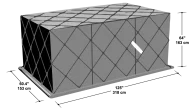 PMC_PQP_P6P Pallet
PMC_PQP_P6P Pallet
Size: Base: 96″ x 125″
Weight Limit: 5,035 kg (LD), 6,804 kg (MD)
Loadable Aircraft Type: 747, 747F, 777, Airbus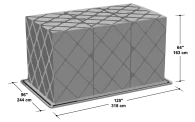 RKN Container
RKN Container
ATA Code: LD3
Internal Volume: 125.41 cu. ft. 3.55 mc
Weight Limit: Weight: 1,588 kg
Loadable Aircraft Type: 747, 747F, 777, Airbus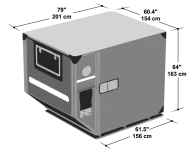 VZA_VRA
VZA_VRA
Max Width for Lower Car: 81″/ 205 cm
Max Centre Height for Lower Car: 59″/ 150 cm
Max Wheel Base: 312 cm
Weight Limit: 2,500 kg(Upper Car)
9,300 kg c(Max Gross Weight of Pallet)
Loadable Aircraft Type: 747F Upper Deck
(BA| British Airways)
City
Country
Airport code
Adelaide
Australia
ADL
Brisbane
Australia
BNE
Cairns
Australia
CNS
Canberra
Australia
CBR
Gold Coast
Australia
OOL
Hobart
Australia
HBA
Melbourne
Australia
MEL
Perth
Australia
PER
Townsville
Australia
TSV
Mackay
Australia
MKY
Sydney
Australia
SYD
Karratha
Australia
KTA
Kununurra
Australia
KNX
Broome
Australia
BME
Rockhampton
Australia
ROK
Kalgoorlie
Australia
KGI
Port Hedland
Australia
PHE
Darwin
Australia
DRW
Alice Springs
Australia
ASP
Launceston
Australia
LST
Newman
Australia
ZNE
Maroochydore
Australia
MCY
Utilised on domestic routes by Qantas
The A330-200, will uplift approx 14 ton or 61 cubic meters
(subject to weather conditions)
Utilised by Qantas on domestic air freight routes
The A330-300, will uplift approx 15 ton or 80 cubic meters
(subject to weather conditions)
Utilised by Qantas on domestic routes
The A320 will uplift 1 ton or approx 3 cubic meters
(subject to weather conditions)
The A321 will uplift 3 ton or 10 cubic meters.
The A330-800 will uplift 20 ton or 68 cubic meters.
The BAE 146 (Quiet trader as it is known)
Will uplift approx 10 ton or 80 cubic meters.
The 737 freighter will uplift approx 17 ton or 130 cubic meters.
The 737-800 will uplift approx 3.5 ton or 30 cubic meters.
The 767 freighter will uplift 56 ton and 320 cubic meters.
The 787-9 will uplift approx 18 ton or 96 cubic meters.
The Seller’s only responsibility is to make the goods available at the Seller’s premises. The Buyer bears full costs and risks of moving the goods from there to destination.
The Seller delivers the goods, cleared for export, to the carrier selected by the Buyer. The Seller loads the goods if the carrier pickup is at the Seller’s premises. From that point, the Buyer bears the costs and risks of moving the goods to destination.
The Seller pays for moving the goods to destination. From the time the goods are transferred to the first carrier, the Buyer bears the risks of loss or damage.
The Seller pays for moving the goods to destination. From the time the goods are transferred to the first carrier, the Buyer bears the risks of loss or damage. The Seller, however, purchases the cargo insurance.
The Seller delivers when the goods, once unloaded from the arriving means of transport, are placed at the Buyer’s disposal at a named terminal at the named port or place of destination. “Terminal” includes any place, whether covered or not, such as a quay, warehouse, container yard or road, rail or air cargo terminal. The Seller bears all risks involved in bringing the goods to and unloading them at the terminal at the named port or place of destination.
The Seller delivers when the goods are placed at the Buyer’s disposal on the arriving means of transport ready for unloading at the names place of destination. The Seller bears all risks involved in bringing the goods to the named place.
The Seller delivers the goods -cleared for import – to the Buyer at destination. The Seller bears all costs and risks of moving the goods to destination, including the payment of Customs duties and taxes.
The Seller delivers the goods to the origin port. From that point, the Buyer bears all costs and risks of loss or damage.
The Seller delivers the goods on board the ship and clears the goods for export. From that point, the Buyer bears all costs and risks of loss or damage.
The Seller clears the goods for export and pays the costs of moving the goods to destination. The Buyer bears all risks of loss or damage.
The Seller clears the goods for export and pays the costs of moving the goods to the port of destination. The Buyer bears all risks of loss or damage. The Seller, however, purchases the cargo insurance.
City
Country
Airport code
Albany
US
ALB
Albuquerque
US
ABQ
Anguilla
Anguilla
AXA
Antigua
Antigua and Barbuda
ANU
Antofagasta
Chile
ANF
Arica
Chile
ARI
Aruba
Aruba
AUA
Asuncion
Paraguay
ASU
Atlanta
US
ATL
Austin
US
AUS
Baltimore
US
BWI
Barcelona
Venezuela
BLA
Baton Rouge
US
BTR
Belize City
Belize
BZE
Belo Horizonte
Brazil
CNF
Birmingham
US
BHM
Bogota
Colombia
BOG
Bristol
US
TRI
Buenos Aires
Argentina
BUE/EZE
Buffalo
US
BUF
Burlington
US
BRL
Calgary
Canada
YYC
Cancun
Mexico
CUN
Cap Haitien
Haiti
CAP
Caracas
Venezuela
CCS
Cedar Rapids
US
CID
Charleston
US
CHS
Charlotte
US
CLT
Chicago
US
ORD
Cincinnati
US
CVG
Cleveland
US
CLE
Columbia
US
CAE
Columbus
US
CMH
Cordoba
Argentina
COR
Corpus Christi
US
CRP
Curacao
Antilles
CUR
Curitiba
Brazil
CWB
Dallas
US
DFW
Dayton
US
DAY
Denver
US
DEN
Des Moines
US
DSM
Detroit
US
DTW
Dominica
Dominica
DOM
El Paso
US
ELP
Fort Da France
Martinique
FDF
Freeport
Bahamas
FPO
Georgetown
Guyana
GEO
Grand Cayman
Cayman Islands
GCM
Greensboro
US
GSO
Greenville
US
GSP
Grenada
Grenada
GND
Guadalajara
Mexico
GDL
Guatemala City
Guatemala
GUA
Guayaquil
Ecuador
GYE
Harrisburg
US
MDT
Hartford
US
BDL
Houston
US
IAH
Huntsville
US
HSV
Indianapolis
US
IND
Iquique
Chile
IQQ
Jackson
US
JAN
Jacksonville
US
JAX
Kansas City
US
MCI
Knoxville
US
TYS
Lafayette
US
LFT
Laredo
US
LRD
Lima
Peru
LIM
Little Rock
US
LIT
Louisville
US
SDF
Manaus
Brazil
MAO
Maracaibo
Venezuela
MAR
Mcallen
US
MFE
Medellin
Colombia
MDE
Memphis
US
MEM
Mendoza
Argentina
MDZ
Merida
Mexico
MID
Mexico City
Mexico
MEX
Miami
US
MIA
Milwaukee
US
MKE
Minneapolis
US
MSP
Mobile
US
MOB
Moline
US
MLI
Monterrey
Mexico
MTY
Montevideo
Uruguay
MVD
Montreal
Canada
YUL
Nashville
US
BNA
Nassau
Bahamas
NAS
Nevis
St Kitts and Nevis
NEV
New Orleans
US
MSY
Newburgh
US
SWF
Norfolk
US
ORF
Oak Harbor
US
ODW
Oklahoma City
US
OKC
Omaha
US
OMA
Ottawa
Canada
YOW
Panama City
Panama
PTY
Pensacola
US
PNS
Philadelphia
US
PHL
Phoenix
US
PHX
Pittsburgh
US
PIT
Pointe-A-Pitre
Guadaloupe
PTP
Porlamar
Venezuela
PMV
Port Au Prince
Haiti
PAP
Port of Spain
Trinidad
POS
Portland
US
PDX
Porto Alegre
Brazil
POA
Providenciales
Turks & Caicos
PLS
Puerto Plata
Dominican Republic
POP
Punta Arenas
Chile
PUQ
Quito
Ecuador
UIO
Raleigh Durham
US
RDU
Richmond
US
RIC
Rio De Janairo
Brazil
RIO
Rochester
US
ROC
Sacramento
US
SMF
Salt Lake City
US
SLC
San Antonio
US
SAT
San Diego
US
SAN
San Jose
Costa Rica
SJO
San Juan
Puerto Rico
SJU
San Luis Potosi
Mexico
SLP
San Pedro Sula
Honduras
SAP
San Salvador
El Salvador
SAL
Santiago
Chile
SCL
Santiago
Dominican Republic
STI
Santo Domingo
Dominican Republic
SDQ
Sao Paulo
Brazil
GRU
Seattle
US
SEA
St Croix
US Virgin Islands
STX
St Kitts
St Kitts
SKB
St Louis
US
STL
St Lucia
St Lucia
UVF
St Maarten
St Maarten
SXM
St Thomas
Virgin Islands
STT
St Vincent
St Vincent
SVD
Syracuse
US
SYR
Tampa
US
TPA
Tegucigalpa
Honduras
TGU
Tobago
Tobago
TAB
Toledo
US
TOL
Toronto
Canada
YYZ
Tortola
Virgin Islands
EIS
Tucson
US
TUS
Tulsa
US
TUL
Valencia
Venezuela
VLN
Vancouver
Canada
YVR
Viracopos
Brazil
VCP
Vitoria
Brazil
VIX
Wilmington
US
ILM
Adelaide
Australia
ADL
Ahmedabad
India
AMD
Auckland
New Zealand
AKL
Bagram
Afghanistan
OAI
Bangalore
India
BLR
Bangkok
Thailand
BKK
Beijing
China
PEK
Brisbane
Australia
BNE
Cairns
Australia
CNS
Canberra
Australia
CBR
Changchun
China
CGQ
Changsha
China
CSX
Chengdu
China
CTU
Chennai
India
MAA
Chongquing
China
CKG
Christchurch
New Zealand
CHC
Colombo
Sri Lanka
CMB
Dalian
China
DLC
Dhaka
Bangladesh
DAC
Dongguan
China
DGM
Fuzhou
China
FOC
Gold Coast
Australia
OOL
Guangzhou
China
CAN
Guilin
China
KWL
Hangzhou
China
HGH
Harbin
China
HRB
Hefei
China
HFE
City
Country
Aiport code
Aberdeen
UK
ABZ
Abu Dhabi
UAE
AUH
Addis Ababa
Ethiopia
ADD
Alicante
Spain
ALC
Almaty
Kazakhstan
ALA
Almeria
Spain
LEI
Amman
Jordan
AMM
Amsterdam
Netherlands
AMS
Antalya
Turkey
AYT
Antwerp
Belgium
ANR
Arrecife/Lanzarote
Spain
ACE
Baghdad
Iraq
BGW
Bahrain
Bahrain
BAH
Baku
Azerbaijan
BAK
Balad
Iraq
XQC
Barcelona
Spain
BCN
Basel
Switzerland
BSL
Beirut
Lebanon
BEY
Belfast
UK
BFS
Bergen
Norway
BGO
Berlin
Germany
BER
Billund
Denmark
BLL
Birmingham
UK
BHX
Bishkek
Kyrgyzstan
FRU
Bordeaux
France
BOD
Bournemouth
UK
BOH
Bratislava
Slovakia
BTS
Bremen
Germany
BRE
Bristol
UK
BRS
Brussels
Belgium
BRU
Bucharest
Romania
OTP
Budapest
Hungary
BUD
Cairo
Egypt
CAI
Cardiff
UK
CWL
Cologne
Germany
CGN
Copenhagen
Denmark
CPH
Cork
Ireland
ORK
Dalaman
Turkey
DLM
Damascus
Syria
DAM
Dammam
Saudi Arabia
DMM
Dar Es Salaam
Tanzania
DAR
Doha
Qatar
DOH
Dublin
Ireland
DUB
Durban
South Africa
DUR
Dusseldorf
Germany
DUS
East Midlands
UK
EMA
Edinburgh
UK
EDI
Entebbe
Uganda
EBB
Erbil
Iraq
EBL
Exeter
UK
EXT
Frankfurt
Germany
FRA
Fuerteventura
Spain
FUE
Geneva
Switzerland
GVA
Gibraltar
Gibraltar
GIB
Glasgow
UK
GLA
Gothenburg
Sweden
GOT
Guernsey
Channel Islands
GCI
Hamburg
Germany
HAM
Hanover
Germany
HAJ
Helsinki
Finland
HEL
Humberside
UK
HUY
Ibiza
Spain
IBZ
Inverness
UK
INV
Isle of Man
UK
IOM
Istanbul
Turkey
IST
Jeddah
Saudi Arabia
JED
Jersey
Channel Islands
JER
Juba
Sudan
JUB
Kigali
Rwanda
KGL
Kuwait
Kuwait
KWI
Larnaca
Cyprus
LCA
Las Palmas
Spain
LPA
Leeds Bradford
UK
LBA
Leipzig
Germany
LEJ
Lille
France
LIL
Liverpool
UK
LPL
Ljubljana
Slovenia
LJU
Luxembourg
Luxembourg
LUX
Lyons
France
LYS
Madrid
Spain
MAD
Malaga
Spain
AGP
Malmo
Sweden
MMA
Malta
Malta
MLA
Manchester
UK
MAN
Marseilles
France
MRS
Mauritius
Republic of Mauritius
MRU
Menorca
Spain
MAH
Milan
Italy
MIL
Mombasa
Kenya
MBA
Moscow
Russia
SVO/DME
Munich
Germany
MUC
Murcia
Spain
MJV
Muscat
Oman
MCT
Mwanza
Tanzania
MWZ
Nantes
France
NTE
Newcastle
UK
NCL
Norwich
UK
NWI
Nuremburg
Germany
NUE
Oslo
Norway
OSL
Ostend
Belgium
OST
Palma Mallorca
Spain
PMI
Paris
France
CDG
Port Elizabeth
South Africa
PLZ
Prague
Czech Republic
PRG
Prestwick
UK
PIK
Pristina
Kosovo
PRN
Reus
Spain
REU
Riyadh
Saudi Arabia
RUH
Rotterdam
Netherlands
RTM
Sana’a
Yemen
SAH
Sarajevo
Bosnia and Herzegovina
SJJ
Seychelles
Republic of Seychelles
SEZ
Shannon
Ireland
SNN
Sharjah
UAE
SHJ
Skopje
Macedonia
SKP
Sofia
Bulgaria
SOF
Southampton
UK
SOU
St Petersburg
Russia
LED
Stavanger
Norway
SVG
Stockholm
Sweden
STO
Strasbourg
France
SXB
Stuttgart
Germany
STR
Tblisi
Georgia
TBS
Tehran
Iran
THR
Tenerife
Spain
TFS
Tirana
Albania
TIA
Toulouse
France
TLS
Turin
Italy
TRN
Valencia
Spain
VLC
Vienna
Austria
VIE
Vilnius
Lithuania
VNO
Vitoria
Spain
VIT
Warsaw
Poland
WAW
Yerevan
Armenia
EVN
Zurich
Switzerland
ZRH
Kandahar
Afghanistan
KDH
Karachi
Pakistan
KHI
Kolkata
India
CCU
Kuala Lumpur
Malaysia
KUL
Lahore
Pakistan
LHE
Male
Maldives
MLE
Manila
Philippines
MNL
Melbourne
Australia
MEL
Mumbai
India
BOM
Nagoya
Japan
NGO
Nanchang
China
KHN
Nanking
China
NKG
Ningbo
China
NGB
Osaka
Japan
KIX
Perth
Australia
PER
Peshawar
Pakistan
PEW
Phuket
Thailand
HKT
Qingdao
China
TAO
Shenyang
China
SHE
Shenzen
China
SZX
Singapore
Singapore
SIN
Suzhou
China
SZV
Taipei
Taiwan
TPE
Tanegashima
Japan
TNA
Tianjin
China
TSN
Urumqi
China
URC
Wenzhou
China
WNZ
Wuhan
China
WUH
Wuxi
China
WUX
Yantai
China
YNT
Zhengzhou
China
CGO
Zi an
China
SIA
Ziamen
China
XMN
Hobart
Australia
HBA
Huangpu
China
ZMY
Hyderabad
India
HYD
Islamabad
Pakistan
ISB
Jaipur
India
JAI
Jakarta
Indonesia
JKT
Kabul
Afghanistan
KBL
Kaimana
Indonesia
KMG
The 59th edition of the IATA Dangerous Goods Regulations incorporates all amendments made by the IATA Dangerous Goods Board and includes addenda issued by ICAO to the 2017–2018 edition of the Technical Instructions. The following list is intended to assist the user to identify the main changes introduced in this edition and must not be considered an exhaustive listing. The changes have been prefaced by the section or subsection in which the change occurs. 2—Limitations 2.3—Dangerous Goods Carried by Passengers or Crew 2.3.5.9—Limitations have been adopted on the number of portable electronic devices (PED) and the number of spare batteries for the PED that may be carried by passengers or crew. The limit is a maximum of 15 PED and a maximum of 20 spare batteries. These maximums may be exceeded with the approval of the operator. Table 2.3.A has also been revised to reflect these limits. 2.8—Operator Variations There are a number of additions, deletions and amendments to variations submitted by operators. 3—Classification 3.9.2—This subsection has been restructured to bring in all substances and articles that are assigned to Class 9 with their respective UN numbers and proper shipping names. The substances and articles have then been grouped according to the hazard they pose in transport. 4—Identification 4.4—Special Provisions A70—Which identifies the conditions under which engines may be considered as “not restricted”. The conditions have been revised to require that the shipper provide written or electronic documentation stating that a flushing and purging procedure for flammable liquid powered engines has been followed. A203—Identifies that vehicles powered by an engine powered by both a flammable liquid and flammable gas must be assigned to the entry Vehicle, flammable gas powered. The special provision has been revised to clarify that in this instance the applicable provisions of PI 950(a) must also be met. 5—Packing 5.0.1.5.1—Has been revised to include new restrictions on packages containing lithium batteries, UN 3090 and UN 3480 only, being placed into an overpack with packages containing dangerous goods classified in Class 1 other than Division 1.4S, Division 2.1, Class 3, Division 4.1 or Division 5.1. 5.0.2.11—An additional note has been added to identify that lithium batteries, UN 3090 and UN 3480 only, are not permitted in the same outer packaging with dangerous goods classified in Class 1 other than Division 1.4S, Division 2.1, Class 3, Division 4.1 or Division 5.1. Packing Instructions PI 951—Has been revised to include a requirement that if the vehicle is powered by an engine using both flammable gas and flammable liquid fuels, then the shipper must also meet the relevant provisions of PI 950. PI Y960—A note has been added to reinforce that dangerous goods in PG I are not permitted. PI 965 and PI 968—Text has been added to identify the restrictions on packing lithium batteries (UN 3480 and UN 3090 only) in the same outer packaging with dangerous goods classified in Class 1 other than Division 1.4S, Division 2.1, Class 3, Division 4.1 or Division 5.1. There are also restriction on placing packages containing lithium batteries (UN 3090 and UN 3480 only) into an overpack with packages containing dangerous goods classified in Class 1 other than Division 1.4S, Division 2.1, Class 3, Division 4.1 or Division 5.1. These restrictions apply to Section IA and IB. For Section II, cells and batteries must not be packed in the same outer packaging with other dangerous goods. 7—Marking & Labelling 7.1.5.5.2—Text has been added recommending that the UN number(s) on the lithium battery mark be of a minimum size.
Make/Model
Max Payload
TonnesMax Loadable Volume
CBM3Cargo Hold Dims
LxWxH cmCargo Door Size
WxH cm
Cessna 406 Titan
1.2
6.5
320 x 120 x 117
124 x 116
Fairchild Metroliner II
1.4
12
835 x 115 x 120
130 x 115
Fairchild Metroliner III
2.1
12
775 x 158 x 145
130 x 115
Fairchild Metroliner 23
2.3
18
775 x 158 x 145
127 x 115
Falcon 20 / 200
2.5
11
704 x 156 x 142
190 x 140
Shorts 360
3.5
40
815 x 190 x 190
142 x 168
Saab 340
3.8
40
1300 x 170 x 170
135 x 130
Aerospatiale ATR42
4.6
40
1080 x 225 x 143
125 x 153
Fokker 27
6.3
58
1336 x 210 x 190
228 x 175
Antonov AN-26
6.5
45
1110 x 220 x 160
230 x 171
Antonov AN-74
6.5
45
1000 x 215 x 220
226 x 220
British Aerospace ATP
8.2
78
1500 x 195 x 180
250 x 169
Lockheed L-188 Electra
15
135
2000 x 280 x 220
355 x 203
Boeing 737-300F
16
115
2100 x 310 x 220
340 x 215
Antonov AN-12
18
95
1380 x 300 x 250
300 x 250
Lockheed L-100 Hercules
21
140
1707 x 302 x 274
302 x 274
Boeing 727-200F
23.5
144
2712 x 351 x 218
340 x 218
Boeing 757F
39
187
3327 x 353 x 218
340 x 218
Airbus A300 B4F
40
280
3900 x 477 x 223
358 x 256
Douglas DC8-62
40
200
3400 x 317 x 203
355 x 215
Douglas DC8-54/55
41
180
3100 x 317 x 203
355 x 215
Ilyushin IL-76
45
180
1850 x 345 x 325
344 x 340
Antonov AN-22
50
650
2640 x 430 x 430
430 x 430
Lockheed L10-11 Tristar
55
420
3300 x 360 x 274
431 x 284
Boeing 767-300F
55
400
3000 x 400 x 250
340 x 254
Douglas DC10-30
65
400
3725 x 448 x 245
350 x 245
McDonnell Douglas MD11
85
500
4800 x 350 x 245
355 x 245
Boeing 747-100F
90
675
4800 x 488 x 300
340 x 300
Boeing 747-200F
100
675
4900 x 488 x 300
340 x 300
Boeing 777F
100
625
4400 x 488 x 300
372 x 305
Boeing 747-300/400F
110
675
5000 x 488 x 300
340 x 300
Antonov AN-124
120
800
3650 x 640 x 440
640 x 440
Antonov AN-225
250
1100
4300 x 640 x 440
640 x 440
SAVE MONEY, SAVE TIME
CargoMasters: Domestic & International Air Freight Company
At CargoMaster we strive to deliver cost effective freight forwarding services to business, government and private individuals.
Contact our team today CargoMaster will save you too!
info@airfreightcompanies.com
1300 767 136
Contact Us Now! … With CargoMaster, we can Save you More!
Thank-you for contacting us, we appreciate the opportunity, if your shipment relates to air freight or less than a container load sea freight, please include the weight and dimensions of each piece in your request. We look forward to working with you, please feel free to call at any time.
TEL: 1300 767 136
|
|
 ®
® 
